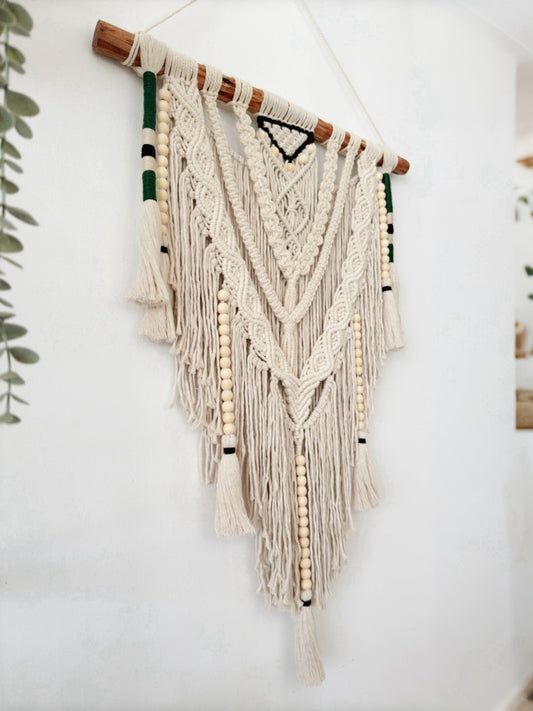From the Middle East to your living room: the fascinating story of macrame

What is macrame?
Macrame belongs to the category of textile art, where threads are wrapped and tied together in various shapes and methods, to create decorative and useful designs. This technique has evolved over hundreds of years, and is now considered a combination of tradition, creativity and modern design.
The word "Macramé" comes from the Arabic word "مقرمة", which means handkerchief or embroidery. Originally, macramé was used as an ornament for textiles, such as scarves and tablecloths, but over the years it has become an art in itself. The art is based on the use of basic knots, such as the square knot and the half hitch, which allow the creation of complex and impressive patterns.
The history of macramé
The macramé technique was created in ancient times, where they used tying methods similar to the methods used today, but for everyday needs, such as creating fishing nets, belts and items for various uses. Macrame developed especially in the Arab world in the 13th century, where threads were wrapped to decorate fabrics, such as towels, scarves and veils. With the Muslim conquest of the Iberian Peninsula, the art of macramé moved to Spain and from there to Italy, then spread throughout Europe.
In the 17th century, macrame became popular among sailors, who used the tying techniques to make items for their ships, and even sold or traded them for other items when docked in ports. In England, the art of macramé was introduced to the court of Mary II in the late 17th century, and she passed it on to her court ladies.
In the 19th century, during the Victorian period, macrame was extremely popular, and was used to create tablecloths, bedspreads and curtains. Over time, art progressed and became an integral part of the world of design in different periods of history.
In 2024, the art of macramé continues to be a central element in interior design and fashion, and integrates into contemporary trends that emphasize sustainability, natural materials and customized designs.
Cultural influences and modern uses
Macrame underwent a cultural transformation in the 1970s, when it became a symbol of the DIY and boho-chic movements. Today, in 2024, it returned to star in the world of design with elements such as:
Wall decorations : Impressive macrame creations that serve as the center of attention in the space, adding texture and visual interest.
Jewelry : necklaces, bracelets and earrings, which combine threads, beads and gems.
Accessories : unique items that emphasize the beauty of the manual technique.
Hanging pot racks: an aesthetic and functional solution for displaying plants in space, combining nature and art.
Why should you learn macrame?
Creativity and precision: This art allows you to express your creativity in a unique way, either by choosing the colors, the texture of the threads, or by combining the shapes into one finished piece.
Therapy and relaxation: working with your hands and using threads creates a feeling of satisfaction and relaxation.
Preserving tradition: This is a way to connect generations and preserve ancient traditions.
Unique design: the possibility to create personalized items for home decoration or as unique gifts.
What is needed to get started?
To start creating with macrame, all you need is quality threads (such as cotton, jute or synthetic threads), scissors and a little patience. Over time, you can progress to more complex projects and incorporate additional materials such as wood, metal and beads.
For more information, details and videos, you are welcome to follow me on Instagram and TikTok .

















